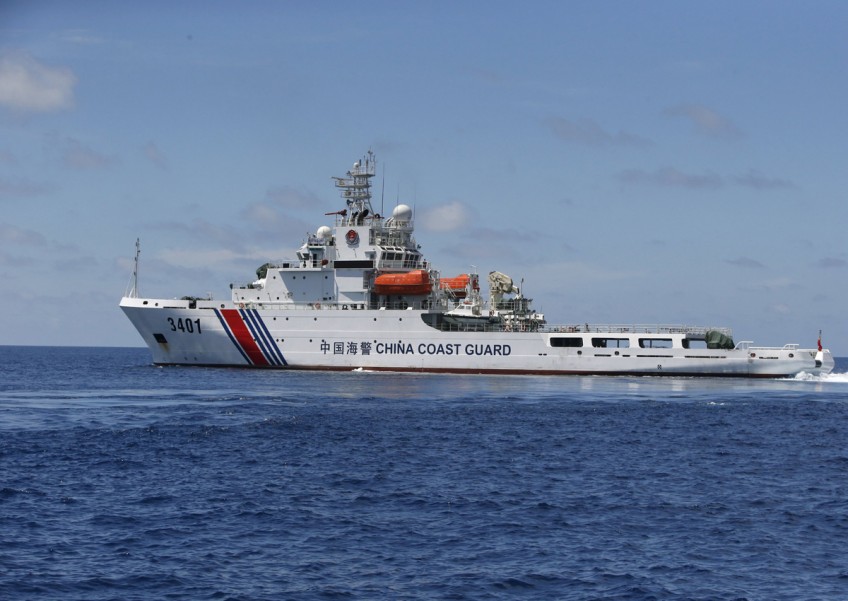China using 'coercive tactics' in S. China Sea: Pentagon

WASHINGTON - China is using "coercive tactics" as it expands its maritime presence in the South China Sea and elsewhere, while at the same time avoiding actions that could trigger armed conflict, the Pentagon said Friday.
In its annual report to Congress outlining China's military and security developments, the Defence Department shed new light on Beijing's growing global footprint and how it appears willing to foster tensions in the contested South China Sea.
"China is using coercive tactics ... to advance their interests in ways that are calculated to fall below the threshold of provoking conflict," the report states.
For instance, China last year deployed coast guard and PLA Navy ships to support its claims in the South China Sea and kept a "near-continuous" presence there.
China claims nearly all of the strategically vital sea, even waters close to Southeast Asian neighbours including Vietnam, the Philippines, Malaysia and Brunei who have competing claims.
Central to China's claims have been land reclamation efforts that have seen tiny islets, reefs and other maritime features built up into military facilities.
The Pentagon report included dramatic photos of these contentious islands, including the Fiery Cross Reef Outpost, which is located in waters between the Philippines and Vietnam.
Since 2014, China has turned a sandy blip in the ocean into an island stretching more than two miles (3.5 kilometers,) complete with a lengthy runway.
China's land reclamation efforts in an area known as the Spratly Islands have seen it add 3,200 acres (1,295 hectares) of land to the seven features it occupies, the report states.
The United States insists China's claims have no legal basis and the US military has conducted several "freedom of navigation" operations, where ships and planes pass close to the sites claimed by China.
Such missions have drawn howls of anger from Beijing, but the US Navy continues to maintain a strong presence in the South China Sea. To draw attention to this, Defence Secretary Ashton Carter has twice in recent months visited US aircraft carriers deployed in the waterway.
"Recent land reclamation activity has little legal effect, but will support China's ability to sustain longer patrols in the South China Sea," the report notes.
For instance, in 2012, "China restricted Philippine fruit imports during the height of Scarborough Reef tensions." The Pentagon report goes on to describe China's growing military presence around the world. In November, Beijing announced it was establishing a military facility in Djibouti.
China's "confirmation of its intention to build its first overseas military support facility in Djibouti likely reflects (a) more global outlook, as it will be utilized to sustain the PLA Navy's operations at greater distances from China," the report notes.
China is the second-largest military spender after the United States. Its annual military budget in 2015 rose to $144 billion (S$198 billion).
The Pentagon's budget is about four times that size.